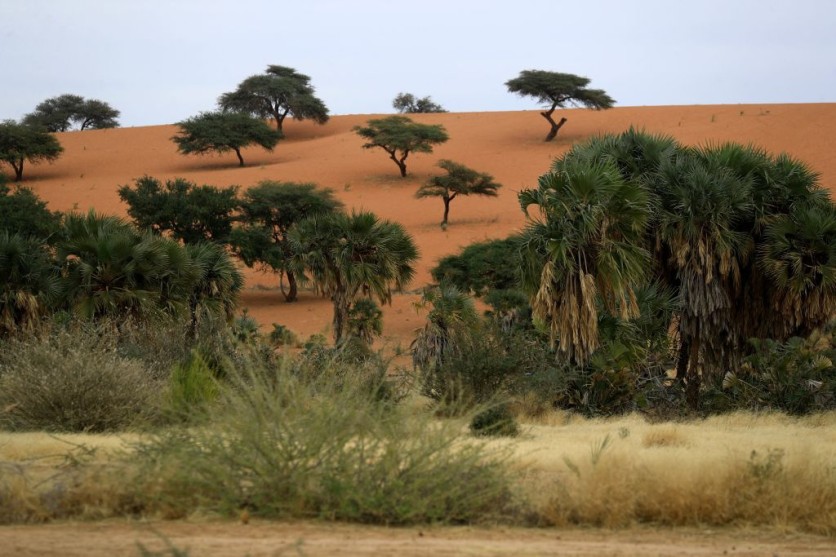Tree species migration is not new as some trees can move, but new research is suggesting that forests in Brazil are moving to escape the increasingly hot environment.
According to Interesting Engineering, a new study released this month indicates that heat-sensitive tree species in Brazil are moving to higher altitudes in an attempt to avoid the worsening effects of climate change.
This phenomenon will exacerbate the effects of climate change on local ecosystems and represent an adaptive response to rising temperatures.

(Photo : ASHRAF SHAZLY/AFP via Getty Images)
Acacia trees are pictured some 30km east of El-Obeid, the capital city of the central Sudanese wilayet (state) of North Kordofan, on January 9, 2023.
This uphill migration has been noticed by researchers from the University of Birmingham and other institutions; their findings have been published in the Journal of Vegetation Science.
The researchers have noted that the migration resembles historical patterns seen during prior climate transitions. According to research, different tree species are migrating to higher, colder locations in search of the best environments for development and survival.
To determine a community temperature score and get insight into the overall climate patterns of the Brazilian Atlantic Forest, the study examines 627 different types of trees at 96 different locations.
The results have significant ramifications for conservation and forest management plans. The composition of forests shifts due to tree relocation, which may have an impact on biodiversity and the health of the forest.
Read Also : Banana-Based Biomaterial Innovates Lightweight Vehicle Parts, Revolutionizing Automotive and Bicycle Design
Tree Migration Consequences
Trees have historically changed where they are found in response to changes in the climate. But because of how quickly things are changing now, there are questions about how quickly ecosystems can adapt. This quick movement might upend long-standing ecological interactions and have unanticipated effects.
Additionally drawing attention to the wider effects of global warming on flora and fauna is the shift of trees uphill. Scientists warn that if temperature increases continue as predicted, additional species will probably follow suit and relocate to higher latitudes or altitudes.
The study emphasizes the need for adaptable forest management techniques that can take into account the shifting geographic distributions of different tree species. To slow down these migrations and maintain ecological equilibrium, it also advocates for greater efforts to prevent climate change.
Flowery Desert
More and more somewhat bizarre occurrences continue to happen due to the ever-changing and worsening climate as alongside tree migration, the driest desert on earth now has flowers thanks to climate change.
It's amazing to see the driest desert decorated with a dizzying diversity of flowers. Part of the Atacama desert has transformed into an unexpected painting of white and purple blossoms, thanks to the unusual occurrence of rainfall in North Chile.
An interesting connection between these blossoming plants and climate change has been discovered by researchers. The mystery is increased by the sight of vibrantly blooming plants in the middle of winter, which is uncommon in the Atacama Desert.
Some suggest that rain in North Chile during the Southern Hemisphere's fall season is the cause of the remarkable bloom.
In mid-April, 0.4 inches of rain and a local word for morning fog, "camanchaca," ignited plants that can stay dormant for up to 15 years. The species that brought the landscape to life were the bright fuchsia-colored "pata de guanaco" blooms and the white "sighs of the field".


![Apple Watch Series 10 [GPS 42mm]](https://d.techtimes.com/en/full/453899/apple-watch-series-10-gps-42mm.jpg?w=184&h=103&f=9fb3c2ea2db928c663d1d2eadbcb3e52)


